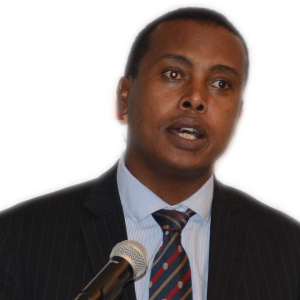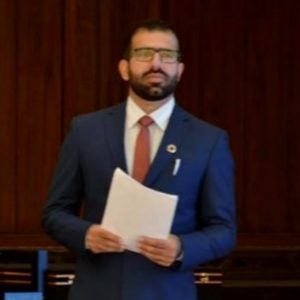La legge n. 163/2016 prevede che l’andamento nell’ultimo triennio degli indicatori di benessere equo e sostenibile (BES) diventi un allegato al Documento di economia e finanza redatto ad aprile di ogni anno; e che il ministero dell’Economia valuti, in una relazione al Parlamento entro il 15 febbraio dell’anno successivo, l’impatto della legge di bilancio su tali indicatori

By Daniele Dionisio
Membro, European Parliament Working Group on Innovation, Access to Medicines and Poverty-Related Diseases
Responsabile del Progetto Policies for Equitable Access to Health – PEAH
Operativi in Italia gli Indicatori BES
Il Benessere Equo e Sostenibile – BES entra a far parte della programmazione economica in Italia. Obiettivo è associare al PIL (Prodotto Interno Lordo, ovvero il peso dei beni e servizi prodotti dal Paese in un anno) una serie di indicatori mirati alle variabili fondamentali della funzione del benessere e qualità di vita per le quali il PIL non è sufficiente né correlato.
L’Italia è il primo paese europeo e del G7 ad includere indicatori del benessere nella programmazione economica, nonostante che sollecitazioni a dotarsi di indicatori BES siano ben presenti nell’Agenda 2030 per lo sviluppo sostenibile diramata dall’ONU nel 2015.

Come stabilito dalla legge di Bilancio 163/2016, ed in riferimento ai 17 obiettivi di sviluppo sostenibile dell’Agenda ONU 2030, un comitato nazionale di esperti ha elaborato 12 Indicatori BES. Lo schema di decreto del ministero dell’Economia con gli indicatori è stato sottoposto in estate alle commissioni Bilancio di Camera e Senato, che hanno espresso parere favorevole. Nelle more della formalizzazione finale, il governo ha comunque già inserito nel Def (Documento di Economia e Finanza) i primi quattro indicatori. Eccoli di seguito:
Reddito medio disponibile aggiustato pro capite
Rapporto tra il reddito lordo disponibile delle famiglie (consumatrici + produttrici) aggiustato (ovvero inclusivo del valore dei servizi in natura forniti dalle istituzioni pubbliche e senza fini di lucro), e il numero totale di persone residenti in Italia (valori nominali in euro).
Permette di stimare l’ammontare complessivo del reddito disponibile per le persone residenti in Italia, compreso il valore dei servizi in natura.
Indice di disuguaglianza del reddito disponibile
Rapporto fra il reddito equivalente totale ricevuto dal 20% della popolazione con il più alto reddito e quello ricevuto dal 20% della popolazione con il più basso reddito.
Fornisce un’informazione sulla distanza in termini di reddito tra i più ricchi e i più poveri che, poiché considera i redditi equivalenti, tiene conto della diversa composizione familiare (diversi bisogni tra bambini e adulti; economie di scala che si realizzano con la coabitazione).
Tasso di mancata partecipazione al lavoro
Rapporto tra la somma di disoccupati e inattivi “disponibili” (persone che non hanno cercato lavoro nelle ultime 4 settimane ma sono disponibili a lavorare), e la somma di forze lavoro (insieme di occupati e disoccupati) e inattivi “disponibili”, riferito alla popolazione tra 15 e 74 anni.
L’indicatore esprime una misura dell’offerta di lavoro insoddisfatta più ampia rispetto al tasso di disoccupazione, poiché coglie anche quella parte di popolazione inattiva che si dichiara disponibile a lavorare pur non avendo cercato lavoro nelle 4 settimane che precedono l’intervista, dando così conto dei fenomeni di scoraggiamento e dei comportamenti “attendisti” dovuti agli esiti di passate azioni di ricerca.
Emissioni di CO2 e altri gas clima alteranti
Tonnellate di CO2 equivalente emesse su base annua da attività agricole, urbane e industriali, per abitante.
Sono incluse le emissioni di anidride carbonica (CO2), metano (CH4) e protossido di azoto (N2O), espresse in “tonnellate di CO2 equivalente”, con pesi che riflettono il potenziale di riscaldamento in rapporto all’anidride carbonica: 1 per CO2; 298 per N20; 25 per CH4. Non viene considerato l’effetto compensativo legato alla presenza di boschi e altra copertura vegetale.
La legge n. 163 prevede che l’andamento nell’ultimo triennio degli indicatori BES diventi un allegato al Def redatto ad aprile di ogni anno; e che il ministero dell’Economia valuti, in una relazione al Parlamento entro il 15 febbraio dell’anno successivo, l’impatto della legge di bilancio su tali indicatori.
In sintesi, il Ministero dell’Economia e delle Finanze, entro il 15 febbraio 2018, valuterà per la prima volta l’impatto delle politiche economiche sui primi 4 indicatori. Successivamente, con il Def 2018, saranno introdotti gli altri otto indicatori come desunti di seguito dall’appendice II della Relazione finale del Comitato per gli indicatori di benessere equo e sostenibile:
Indice di povertà assoluta
Percentuale di persone appartenenti a famiglie con una spesa complessiva per consumi inferiore al valore soglia di povertà assoluta, sul totale delle persone residenti.
Speranza di vita in buona salute alla nascita
Numero medio di anni che un bambino nato nell’anno di riferimento può aspettarsi di vivere in buona salute, nell’ipotesi che i rischi di malattia e morte alle diverse età osservati in quello stesso anno rimangano costanti nel tempo.
Eccesso di peso
Proporzione standardizzata di persone di 18 anni e più in sovrappeso o obese sul totale delle persone di 18 anni e più.
Uscita precoce dal sistema di istruzione e formazione
Percentuale della popolazione in età 18-24 anni con al più il diploma di scuola secondaria di primo grado (licenza media), che non è in possesso di qualifiche professionali regionali ottenute in corsi con durata di almeno 2 anni e non frequenta nè corsi di istruzione nè altre attività formative.
Rapporto tra tasso di occupazione delle donne 25-49 anni con figli in età prescolare e delle donne senza figli
Rapporto tra il tasso di occupazione delle donne di 25-49 anni con almeno un figlio in età prescolare (0-5 anni) e il tasso di occupazione delle donne di 25-49 anni senza figli, per 100.
Indicatore di criminalità predatoria
Numero di vittime di furti in abitazione, borseggi e rapine per 1000 abitanti.
Indice di efficienza della giustizia civile (durata media effettiva in giorni dei procedimenti di cognizione civile ordinaria definiti dei tribunali)
Il dato tiene conto dei procedimenti civili di cognizione ordinaria di primo e secondo grado (contenzioso + non contenzioso) dell’area SICID al netto dell’attività del Giudice tutelare e dell’Accertamento Tecnico Preventivo in materia di previdenza.
Indice di abusivismo edilizio
Numero di costruzioni abusive per 100 costruzioni autorizzate dai Comuni.
La scelta dell’Italia di dotarsi di indicatori BES appare necessaria anche alla luce del rapporto ASviS 2017 (Alleanza italiana per lo sviluppo sostenibile, rete di 170 organizzazioni), che indica i punti di forza e debolezza dell’Italia riguardo ai 17 obiettivi dell’Agenda ONU 2030 per lo sviluppo sostenibile. In sintesi, mentre si registrano miglioramenti per nove target, tra cui educazione, salute e alimentazione, è evidente un regresso per povertà, gestione delle acque, disuguaglianze ed ecosistema terrestre.
I dati del rapporto suggeriscono che una strategia basata su politiche integrate (che non trascurino interventi specifici in settori quali, ad esempio, consumo di suolo, approvvigionamento idrico e qualità dell’acqua e degli ecosistemi) migliorerebbe le prestazioni dell’Italia.
In questo scenario, l’entrata in azione, accanto al PIL, degli indicatori BES costituisce, senz’altro, un importante passo in avanti.
PER APPROFONDIRE
Legge 4 agosto 2016, n. 163 http://www.gazzettaufficiale.it/eli/id/2016/08/25/16G00174/sg
Testo dello schema di decreto e della relazione della Commissione che ha predisposto gli indicatori http://www.senato.it/service/PDF/PDFServer/BGT/1029767.pdf
Rapporto ASviS 2017 http://www.asvis.it/rapporto-2017/
UN: Transforming our world: the 2030 Agenda for Sustainable Development https://sustainabledevelopment.un.org/post2015/transformingourworld










